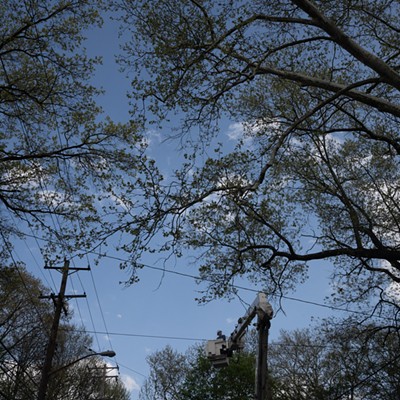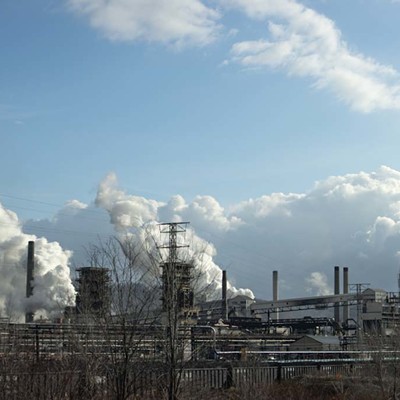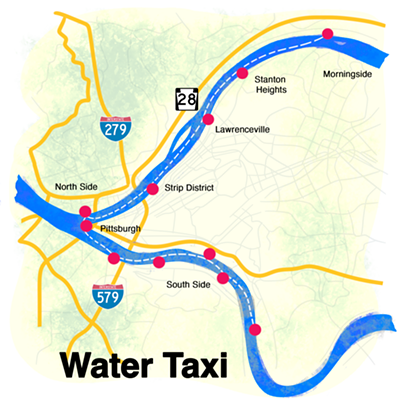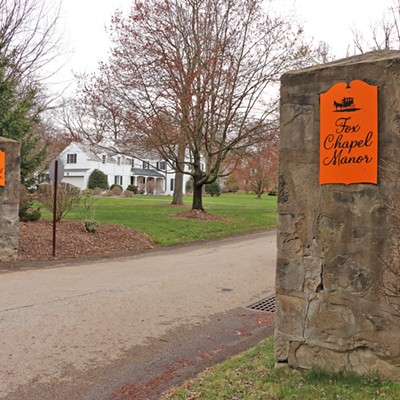One of the country's pioneering grassroots environmental groups was launched right here in Pittsburgh, and remains active to this day.
Citizen Environmentalists, a new book by James Longhurst, is devoted largely to the story of the Group Against Smog and Pollution (GASP). Founded here in 1969, GASP was in the vanguard of a now-familiar phenomenon: everyday people banding together for cleaner air, land and water.
Longhurst's book both uncovers a largely forgotten history and explodes some assumptions about the environmental movement.
Today, we take it for granted that citizens will testify at public hearings on things like new federal regulations for coal-ash disposal. But it wasn't always so, says Longhurst, an assistant professor of history at the University of Wisconsin-LaCrosse. Traditionally, such decisions were the province of bureaucrats, technocrats and industry itself, sometimes with token citizen input.
In the late '60s, however, court rulings gave legal standing to everyone affected by pollution -- not just property owners with an economic interest. Now, "breathers" had rights too. And laws passed in the wake of the civil-rights movement actually required that environmental rule-makers hear public input.
With due respect to activists who'd previously promoted cleaner air in Pittsburgh, this "fundamental reorganization of what citizens can do," as Longhurst puts it in a phone interview, greatly increased ordinary people's clout.
GASP, in fact, was formed following a series of public hearings on new state and county air-pollution laws. But Longhurst says GASP didn't follow the standard "environmental movement" origin story, with young people enlightened by the ecological principles in Rachel Carson's Silent Spring carrying the banner forth to the first Earth Day.
Rather, the all-volunteer GASP was led largely by people like Michelle Madoff, the group's first president -- a Squirrel Hill mother and heart surgeon's wife appalled by Pittsburgh's smoky air. "I was expecting college groups, I was expecting young people," says Longhurst, who began his book in 1998, as a Carnegie Mellon University grad student. "What I found were housewives. What I found were longstanding civic organizations -- basically, neighborhood groups," plus churches and labor unions.
Similar alliances formed nationally (some with a familiar acronym, including Montana's Gals Against Smog and Pollution). But Pittsburgh was unique, and not just uniquely dirty: At public hearings, GASP tapped the city's unusual abundance of medical and scientific experts to quickly become a credible voice.
This adversarial system -- citizens mustering well-researched arguments for stricter laws -- was new. Politicians and industrialists were accustomed to an insular, "cooperative" approach. So institutions like the county's variance board -- which weighed appeals by clean-air violators -- quickly became battlegrounds. Politically influential polluters like Duquesne Light and J&L Steel sought exceptions to the law ... and usually got them. Debate descended to the reductive jobs-versus-health impasse we're still stuck in today.
For its early leaders, GASP was often the springboard to bigger stages. (Madoff, for instance, later outspokenly served on Pittsburgh City Council.) And GASP remains a key environmental advocate. Recent successes include negotiating a cap on lead emissions at RRI Energy's coal-fired Cheswick power plant. GASP representatives still serve on local air-quality boards and committees. And GASP runs a citizen "smoke-reading" program, with half a dozen volunteers certified to evaluate visible emissions from stationary sources.
Structurally, the group is much changed. It now has three full-time paid staff, including executive director Rachel Filippini and an attorney.
Much also remains the same -- sometimes unfortunately. As in 1969, the region's big air-pollution headaches include U.S. Steel's Clairton Coke Works. Despite four decades of halting progress and pressure from groups like GASP, the huge plant remains largely responsible for the fact that its five-borough region has some of the worst air in the nation.
While global environmental problems like climate change are getting more attention, most activism remains motivated by backyard threats -- stuff like Marcellus Shale gas drilling. "It's when things come down to a local level [that] people really get involved," says Filippini.
Yet boosting involvement is still a challenge, too. Forty-one years after GASP was created, Allegheny County remains in federal nonattainment for ground-level ozone -- basically, smog. As Filippini says, "There is plenty of work to do."













